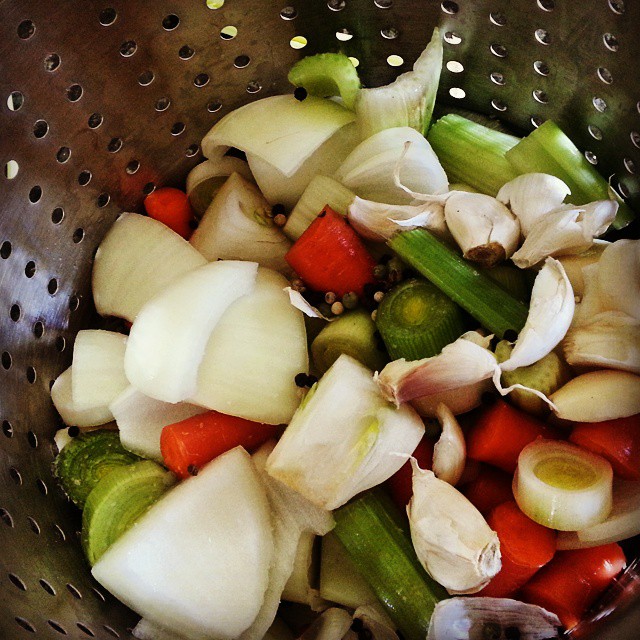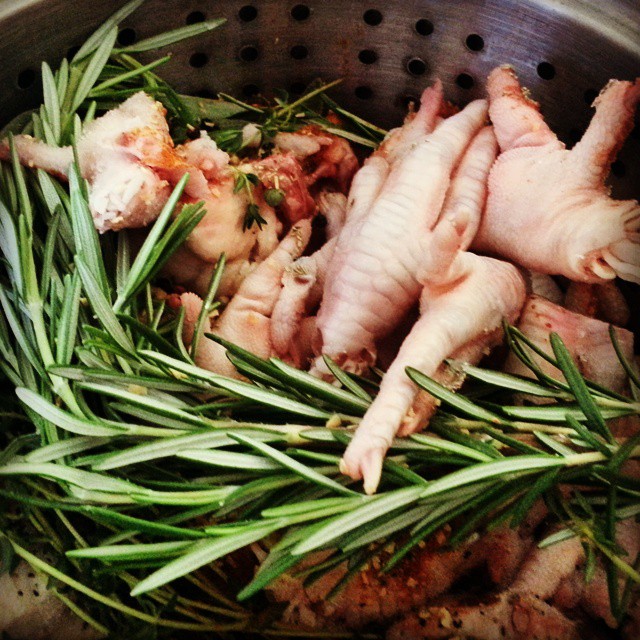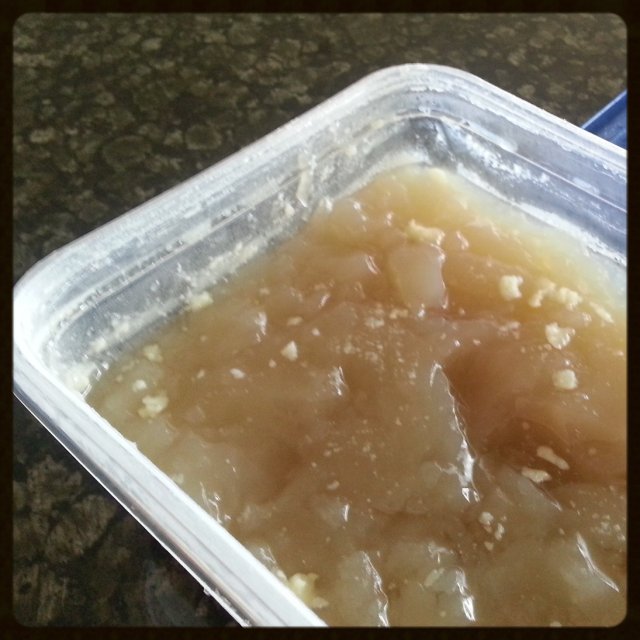Each week I share a recipe in the newsletter I write for my coaching practice. I won’t go into the details today about why I share recipes, but will share that story soon.
This week’s recipe is for chicken stock.
I used to buy chicken broth (you know, the Swanson’s kind) and then, as I became a bit more sophisticated cook, I started using a high quality, unsalted stock (Kitchen Basics – Vegetable Stock and Chicken Stock are both in my pantry). Then, I was convinced by a friend to give making my own stock a try, and after I cooked with that first batch of stock I had made, I was HOOKED.
The stock I made had a deeper flavor and, I could make it a bit more nutritious by using chicken feet as a part of the stock. Yes, you read that right: chicken feet. Why? Because using the feet adds glucosamine chondroitin and collagen to your broth. And, as we age, some folks (ahem, me) have found that the addition of more of those in my diet helps ease my joints (especially my hips and hands).
Begin with a visit to your butcher. I am so fortunate that my favorite local grocery, Dorothy Lane Market, has a top-notch meat department with knowledgeable butchers. To make stock, you’ll want necks and backs along with the feet. The parts come from the same local free-roaming chickens that I’d buy the breasts from.
Tell your butcher that you need chicken parts for stock – about four pounds. You will need to tell your butcher that you want FEET, otherwise he will only get necks and backs (since the feet freak too many folks out).
(I totally get it if you don’t want to use the feet. It still freaks me out when I’m using them.)
Start with a BIG stock pot. I use a double pot – with an inner basket so that I have an easier time separating all of the solids from the liquid.
In your pot add: one yellow onion, quartered, one head of garlic (cloves smashed), three stalks of celery (cut into manageable pieces), three carrots (cut into manageable pieces), two leeks, sliced and rinsed (the white and light green parts) and a palm full of whole peppercorns.

Add four pounds of chicken parts and an assortment of fresh herbs (I use the ones marked “poultry seasonings, which includes rosemary, thyme and sage). You may desire to add a heavy pinch of kosher salt, but I usually don’t.

Then add filtered water (the same water you’d make coffee with) to the top of your pot. Bring the liquid to boiling and then put heat to low, cover and let simmer for 2 1/2 hours.
After your 2 1/2 hours are up, remove all the solids and discard. There will still be traces of herbs and whole peppercorns, so once the solids are removed, pour stock (careful it will be very HOT) through a fine mesh strainer.
Then, I begin immediately packaging it into freezable containers. I prefer BPA Free plastic containers that are designed to hold 3 cups of food. Use cup to transfer stock to containers until they are 2/3 full (leaving room for expansion in the freezer).
(Though I like to store most sauces in freezer bags so they pack flat, this will not work well for you during the thawing process for chicken stock!)
Leave stock on the counter in containers to cool enough to put in your refrigerator (about an hour). Leave in the fridge at least 4 hours or up to overnight.
If you use the feet, your finished (cold) stock will have the consistency of soft jello.

Pull containers out of fridge and skim off any fat and discard (fat will rise to the top). Then, freeze.
Stock is good in the freezer for up to six months. To use, put in the fridge the night before to thaw and use entire container within 3 days.

I use stock in place of water in rice and quinoa, to make soups, and to enhance dishes being sauteed on the stove top. If your recipe calls for adding your rice and liquid to the pot at the same time, you’ll get better results letting the stock come up to a warm temperature (liquid not jello-ish) before adding the rice.




